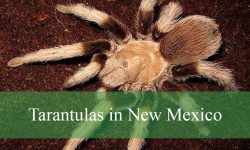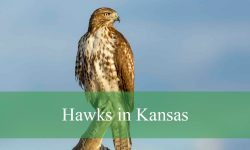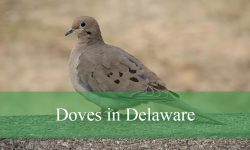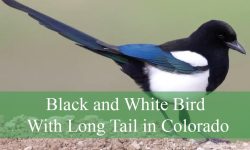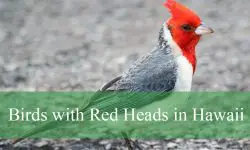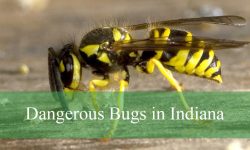Crows are among the most intelligent and adaptable birds found across Nevada. Their presence adds both sound and movement to the state’s varied landscapes, from the dry Great Basin deserts to forested mountain slopes. These birds are part of the Corvidae family, which also includes ravens, magpies, and jays, all known for their problem-solving skills and social behavior.
In Nevada, several types of crows and their close relatives thrive in different habitats. Some species are commonly seen in urban areas scavenging for food, while others prefer remote mountain forests or open woodlands. Each species has its own distinct features that make identification both fun and rewarding for birdwatchers.
This guide introduces eight types of crows and their relatives that can be spotted across Nevada. You’ll learn how to recognize them by their appearance, calls, and behaviors, along with insights into where and when to find them. It’s a perfect reference for anyone interested in exploring the clever world of these fascinating black birds.
Common Types of Crows Found in Nevada
American Crow (Corvus brachyrhynchos)
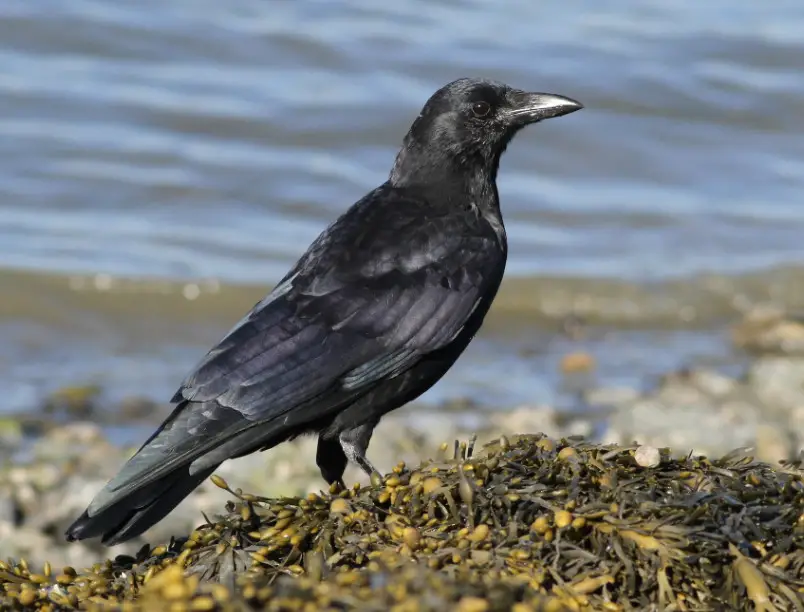
The American Crow is one of the most recognizable black birds in Nevada, known for its all-black plumage, fan-shaped tail, and steady cawing calls. Measuring about 16 to 20 inches in length, it has a sturdy build and a thick bill that helps it feed on a variety of foods. Its glossy feathers can show hints of purple and green under sunlight, and its broad wings make it a strong, steady flyer. The crow’s intelligence and adaptability have helped it thrive in both rural and urban areas.
Identification is often easiest through its distinct caw — a loud, harsh sound that can be heard echoing across open landscapes or city parks. Unlike the raven, which has a wedge-shaped tail and deeper croak, the American Crow’s call is sharper and more repetitive. Its social nature is another key trait, as these birds often form large, noisy flocks, especially during the winter months.
Behaviorally, American Crows are known for their curiosity and resourcefulness. They are omnivorous and opportunistic, feeding on insects, grains, fruits, small animals, and even discarded human food. They often cache food for later and use basic problem-solving skills to access hard-to-reach items. Crows are also highly social, often seen in family groups that work together to protect territory and raise young.
In Nevada, American Crows are common in agricultural areas, suburbs, and along riparian corridors. They adapt easily to human presence, nesting in tall trees near open fields or water sources. Birdwatchers can spot them throughout the state, especially near Las Vegas, Reno, and the Carson Valley region, where food and nesting sites are abundant.
Common Raven (Corvus corax)
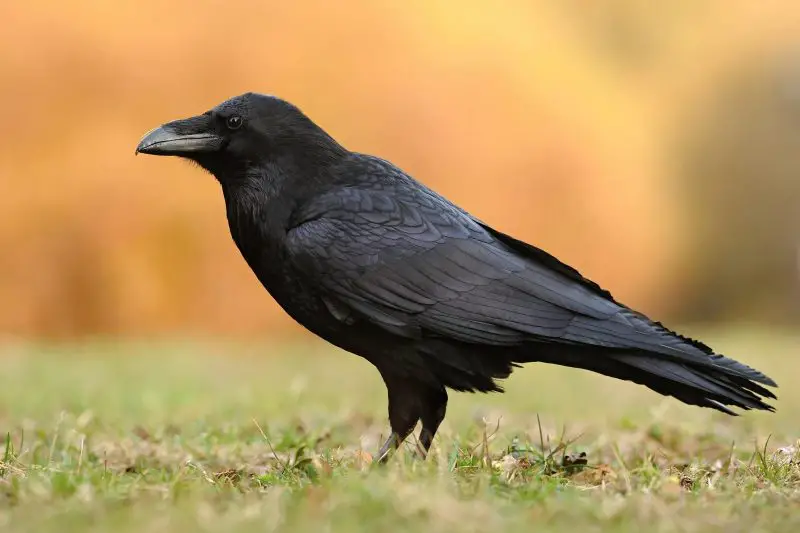
The Common Raven is the largest member of the Corvid family and one of the most iconic birds of Nevada’s desert and mountain landscapes. It can reach up to 27 inches in length with a wingspan of more than 4 feet. Its shaggy throat feathers, thick neck, and large curved bill give it a commanding presence. The feathers shine with a deep blue or violet sheen in bright light, setting it apart from other black birds.
Ravens are often identified by their wedge-shaped tail, which is visible in flight, and their deep, resonant croak that carries across long distances. They are strong fliers, capable of soaring and performing acrobatic maneuvers, often seen gliding over cliffs or riding desert thermals. This grace in the air reflects their intelligence and adaptability on the ground, where they can open containers or drop nuts onto rocks to crack them open.
Common Ravens exhibit complex social and communication behaviors. Pairs often mate for life, staying together year-round, while younger birds may form temporary groups. Their vocal range includes dozens of sounds used to express alarm, affection, or curiosity. Ravens are omnivores, feeding on carrion, insects, fruit, small animals, and even garbage in urban settings. Their ability to survive on almost any food source has made them one of Nevada’s most successful birds.
In Nevada, Common Ravens are widespread and can be found in nearly every region, from the dry Mojave Desert to high mountain forests. They are especially abundant in southern Nevada, including Red Rock Canyon and the surrounding desert plains. Their adaptability allows them to thrive near highways, campgrounds, and remote cliffs, making them one of the state’s most familiar bird species.
Chihuahuan Raven (Corvus cryptoleucus)
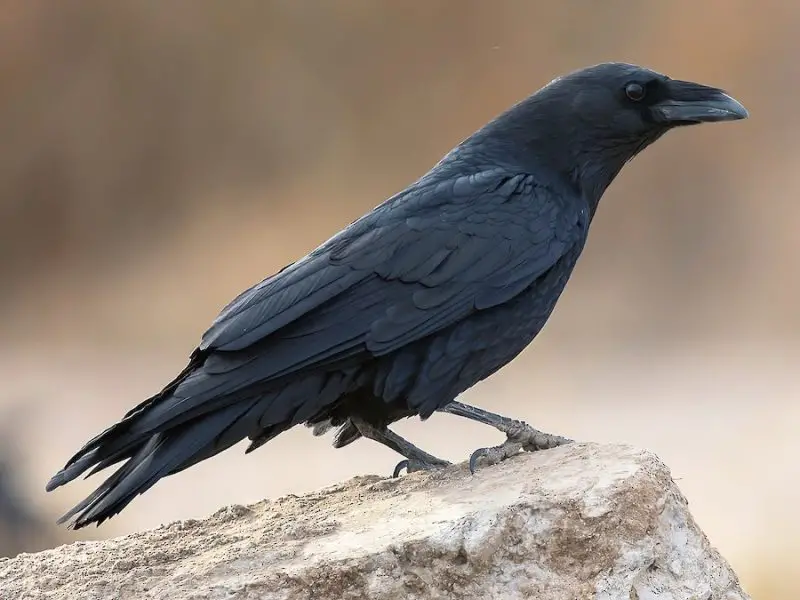
The Chihuahuan Raven is smaller than the Common Raven but larger than the American Crow, creating an intermediate presence among Nevada’s black birds. It typically measures around 18 to 20 inches long, with a wingspan of about 40 inches. Its glossy plumage often reveals a purplish sheen in the sunlight, and its slightly curved bill is less massive than that of the Common Raven. The name “Chihuahuan” comes from its primary range across the Chihuahuan Desert, though it extends northward into southern Nevada.
One of the best ways to identify this species is by looking for the white-based feathers on its neck, which can sometimes be seen when the wind ruffles its plumage. It also has a squared-off tail and a distinctive, nasal croaking call that differs from both the deeper tone of the Common Raven and the sharp caw of the American Crow. Its flight pattern is lighter and more buoyant, often featuring frequent wingbeats interspersed with short glides.
Behaviorally, Chihuahuan Ravens are highly social, often seen in pairs or small flocks foraging in open country. They are intelligent scavengers that feed on insects, seeds, carrion, and agricultural leftovers. Like other corvids, they display remarkable problem-solving skills and sometimes follow livestock or vehicles in search of food. During nesting season, pairs build stick nests in isolated trees, utility poles, or cliffs.
In Nevada, Chihuahuan Ravens are primarily found in the southern and southeastern parts of the state, especially near desert scrublands and grasslands around Clark and Lincoln Counties. They thrive in open terrain where they can easily locate food, making them more common in rural regions than in cities. Observers often spot them perched on fence posts or flying low over arid plains.
Clark’s Nutcracker (Nucifraga columbiana)
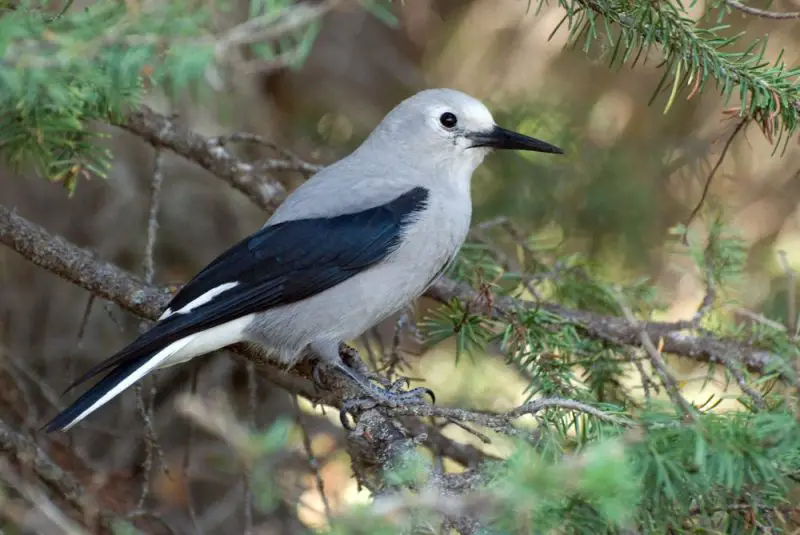
Clark’s Nutcracker is a striking gray-and-black bird that inhabits Nevada’s high mountain forests. It belongs to the Corvid family and is closely related to crows and jays. Measuring around 11 to 13 inches long, it has pale gray plumage with contrasting black wings and tail, accented by white patches that flash clearly in flight. Its long, pointed bill is perfectly adapted for prying open pinecones and retrieving seeds.
Unlike the darker crows and ravens, Clark’s Nutcracker stands out for its unique coloration and specialized diet. It is most often found in association with high-elevation pine forests, especially those dominated by whitebark, limber, and pinyon pines. This bird plays a critical ecological role by dispersing pine seeds, which it caches in thousands of locations to retrieve later during winter. Many of these seeds germinate, helping regenerate forest ecosystems.
Clark’s Nutcrackers are known for their intelligence and remarkable memory. They can remember thousands of seed cache locations even months later. Their calls are loud and nasal, often echoing across mountain valleys. During breeding season, pairs become highly territorial, building nests in conifer trees and raising young early in the spring before snow fully melts.
In Nevada, Clark’s Nutcrackers are most commonly seen in the Sierra Nevada, the Spring Mountains, and other high-elevation regions. They frequent areas above 6,000 feet, where conifer forests provide both food and nesting habitat. Birdwatchers often encounter them around mountain trails, ski areas, and forested ridges, especially in Lake Tahoe and Great Basin National Park regions.
Steller’s Jay (Cyanocitta stelleri)
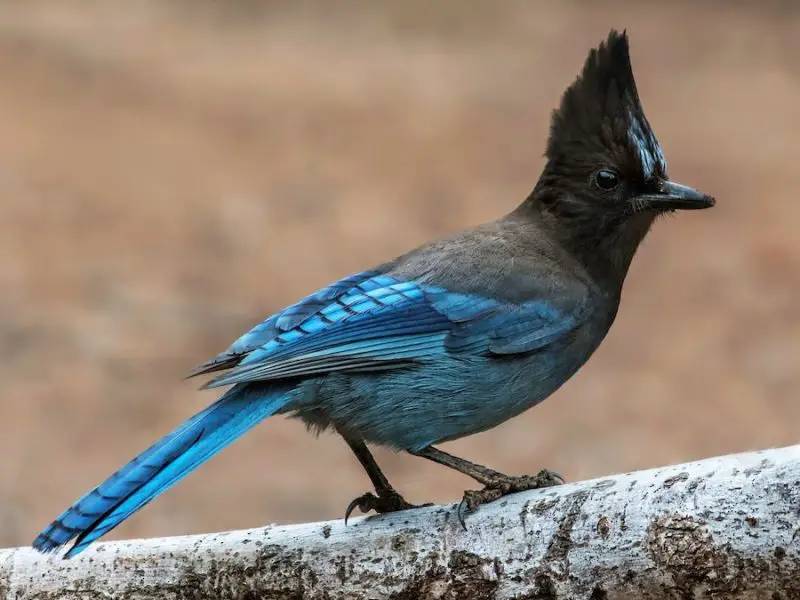
The Steller’s Jay is one of Nevada’s most striking corvids, easily recognized by its deep blue body and contrasting black crest. Measuring around 11 to 13 inches in length, it has long wings and a sturdy black bill suited for cracking nuts and seeds. Its bold crest, which it raises or lowers depending on mood, gives it a distinctive silhouette among mountain forest birds. The dark head gradually blends into vivid cobalt-blue wings and tail feathers, creating one of the most beautiful color patterns in the Corvid family.
Identification is often aided by the Steller’s Jay’s harsh, metallic calls, which can sound like shack-shack-shack or mimic other birds and even human-made noises. It is a curious and vocal bird that rarely stays still, hopping between branches or swooping down to investigate feeders, campsites, and picnic areas. Its intelligence and boldness make it both fascinating and mischievous to watch.
Behaviorally, Steller’s Jays are opportunistic omnivores. They feed on acorns, pine seeds, insects, berries, and sometimes small vertebrates or eggs. They are also known to raid bird feeders and campsites for crumbs. These jays often cache food for later use, hiding seeds under bark or soil. They form monogamous pairs that stay together throughout the year, defending their territory with loud, aggressive displays.
In Nevada, Steller’s Jays are primarily found in forested regions of the Sierra Nevada, the Spring Mountains, and other high-elevation coniferous areas. They prefer mixed pine and fir forests but can also adapt to suburban mountain communities where trees provide cover and food. Around Lake Tahoe and Great Basin National Park, their loud calls are a common sound among the pines.
Woodhouse’s Scrub-Jay (Aphelocoma woodhouseii)

Woodhouse’s Scrub-Jay is a medium-sized, bright blue and gray bird commonly seen throughout Nevada’s deserts and woodlands. It measures about 11 inches long and features a vibrant blue head, wings, and tail, with a soft gray back and chest. Unlike the crested Steller’s Jay, the Scrub-Jay has a sleek head with no crest, giving it a smooth and elegant appearance. Its coloration blends beautifully with the muted tones of Nevada’s high desert and pinyon-juniper woodlands.
Identification is straightforward due to its noisy and expressive personality. The bird’s call is a series of raspy, scolding notes, often given in quick bursts as it flits between shrubs and trees. It’s an inquisitive bird that rarely shies away from humans, often visiting feeders and outdoor tables in search of peanuts or seeds. The Scrub-Jay’s intelligence is remarkable, rivaling that of crows and ravens, and it frequently caches acorns or other food for winter.
Woodhouse’s Scrub-Jays are highly territorial and usually live in pairs or small family groups. Their diet includes insects, fruits, nuts, and small animals, and they are known for their role in seed dispersal, particularly of pinyon pines. They have strong spatial memory, allowing them to relocate hidden food months later. During nesting season, both sexes help build nests of twigs and grass, usually placed in dense shrubs or small trees.
In Nevada, these jays are widespread throughout the Great Basin and southern mountain ranges. They are especially common in areas with juniper and pinyon pine, such as near Ely, Tonopah, and the eastern slopes of the Sierra Nevada. Their adaptability allows them to thrive in both natural and semi-urban environments, making them one of the state’s most familiar blue birds.
Pinyon Jay (Gymnorhinus cyanocephalus)
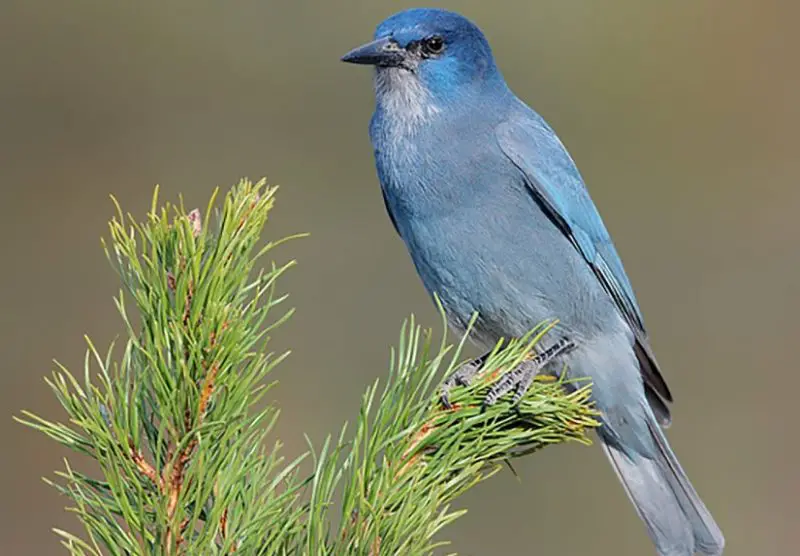
The Pinyon Jay is a highly social and specialized corvid that lives in Nevada’s pinyon-juniper forests. It has a distinctive blue-gray plumage, a short tail, and a thick, pointed bill. Measuring about 10 to 11 inches long, this bird lacks the crest seen in other jays but stands out for its dusty-blue coloration and gregarious behavior. Pinyon Jays are uniquely adapted to the dry woodlands of the American Southwest, where they depend heavily on the seeds of pinyon pines.
Identification is easy when observing their large flocks, which can number in the hundreds. These birds move together in coordinated flight, calling with a nasal kaw-kaw-kaw that echoes through canyons and mountain slopes. Their calls are less musical but far-carrying, often the first clue to their presence. In flight, they appear compact and fast, moving in tight groups between feeding areas and roosting sites.
Behaviorally, Pinyon Jays are known for their exceptional intelligence and cooperative breeding. They live in complex social structures where individuals help raise young that are not their own. Their entire life cycle revolves around pinyon pine seeds, which they gather and store in thousands of hidden caches. Many of these seeds are never retrieved, contributing to the regeneration of Nevada’s pine forests.
In Nevada, Pinyon Jays are common in central and eastern regions, especially in areas where pinyon-juniper forests dominate the landscape. They can be found in the foothills of the Ruby Mountains, around Great Basin National Park, and throughout the high desert plateaus. Their presence is a good indicator of healthy pinyon pine ecosystems, and birdwatchers often hear their loud calls long before spotting the flock itself.
Black-billed Magpie (Pica hudsonia)
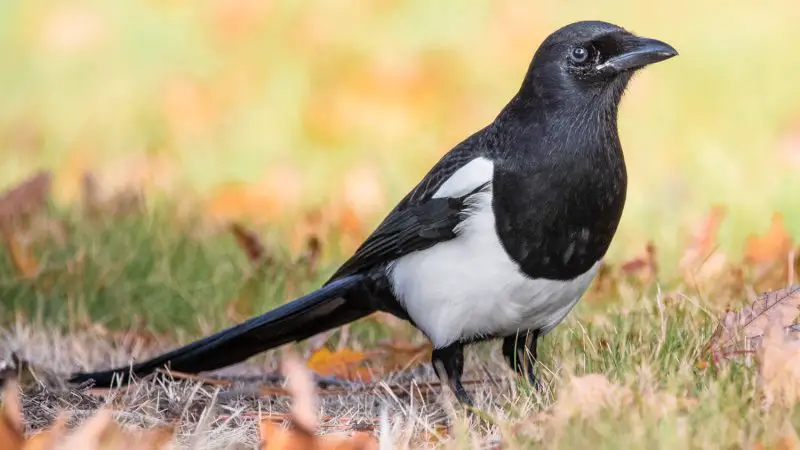
The Black-billed Magpie is one of the most distinctive birds in Nevada, easily identified by its striking black-and-white plumage and long, iridescent tail. Measuring 18 to 24 inches in length, this bird’s tail alone can account for more than half its body length. The black feathers shimmer with green and blue iridescence in sunlight, while the white patches on the wings and belly make it stand out against any background. Its black bill and white shoulder patches are key features for quick identification.
Magpies are highly vocal birds, producing a variety of chattering and rattling calls. Their behavior is confident and often bold, especially around humans. They are intelligent, curious, and sometimes mischievous, known to investigate shiny objects or scavenge near roadsides and farms. Their intelligence is evident in their problem-solving skills and their ability to recognize themselves in mirrors—one of the few bird species known to do so.
Dietarily, the Black-billed Magpie is omnivorous. It eats insects, small mammals, carrion, seeds, and fruits, as well as food scraps left by humans. During breeding season, magpies build large, dome-shaped nests of sticks and mud, lined with soft materials. They are fiercely protective of their young and work cooperatively in small family groups.
In Nevada, Black-billed Magpies are most common in the northern and western parts of the state, particularly near open grasslands, agricultural fields, and river valleys. They are frequently seen in Reno, Elko, and along the Truckee River corridor. Their adaptability and strong social structure allow them to thrive in a variety of habitats, making them one of Nevada’s most charismatic and easily recognized corvids.
Tips for Observing Crows in Nevada
Observing crows and their relatives in Nevada is a rewarding experience for birdwatchers of all levels. The key is to focus on their behavior, vocalizations, and habitat rather than just color, since many of these species share similar dark plumage. Early mornings and late afternoons are the best times to spot crows, ravens, and jays as they actively forage or call to one another. Carrying binoculars helps you appreciate their subtle color patterns and watch their intelligent interactions up close.
When observing in desert or open-country habitats, look for Common Ravens and Chihuahuan Ravens soaring over the landscape or perched along highways and cliffs. In forested or mountainous regions, you’re more likely to see Steller’s Jays, Clark’s Nutcrackers, and Pinyon Jays flitting through pine canopies or visiting campgrounds. Keep an ear open — many of these species reveal themselves through distinctive calls long before they are visible.
If you want to attract crows and jays to your yard, provide natural food sources and fresh water. Offer peanuts, suet, or sunflower seeds on platform feeders, and leave a shallow birdbath nearby. Avoid making sudden movements, as these birds are highly observant and cautious. Over time, they may grow accustomed to your presence, allowing for closer observation and rewarding encounters with Nevada’s most intelligent feathered residents.
FAQs About Crows in Nevada
Are there true crows in Nevada?
Yes. The American Crow (Corvus brachyrhynchos) is the state’s primary true crow species. It’s widespread in both urban and rural areas, easily recognized by its steady caw call and fan-shaped tail. Other corvids like ravens, magpies, and jays belong to the same family but differ slightly in size, shape, and habitat preference.
How can you tell a crow from a raven in Nevada?
Ravens are larger, with wedge-shaped tails and deeper, croaking calls. Crows have smaller, rounded tails and sharper, higher-pitched calls. In flight, ravens soar more gracefully with fewer wingbeats, while crows typically flap continuously. Observing size, call tone, and tail shape are the best ways to distinguish between the two.
Where are the best places to see crows in Nevada?
Crows and their relatives are found throughout the state. American Crows thrive near cities like Reno, Las Vegas, and Carson City. Common Ravens dominate desert regions such as Red Rock Canyon and the Great Basin, while Steller’s Jays and Clark’s Nutcrackers are most common in mountainous forests near Lake Tahoe and Great Basin National Park.
Do crows migrate through Nevada?
Most corvids in Nevada are year-round residents. However, some American Crows may move slightly south or to lower elevations during harsh winters. Other species like Clark’s Nutcracker or Pinyon Jay may wander locally depending on food availability, especially pine seed crops.
Why are crows and ravens considered intelligent birds?
Crows and ravens have some of the largest brains relative to body size among birds. They use tools, solve puzzles, remember human faces, and even communicate complex ideas with varied calls. In Nevada, observers often witness these birds displaying problem-solving behaviors, such as dropping nuts on roads for cars to crack open.
Can crows and ravens live in cities?
Yes. Both species adapt remarkably well to urban life. Crows are often seen scavenging in parks, schoolyards, and farmlands, while ravens patrol highways and landfills. Their intelligence allows them to exploit human-altered environments, finding food and nesting opportunities where many other species cannot.

